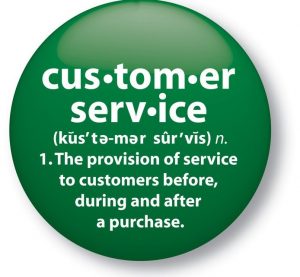 The key piece of advice continuing to raise its head when defining an effective social media strategy is to speak in the language of your customers. This is good advice, but I wonder how many companies are taking heed?
The key piece of advice continuing to raise its head when defining an effective social media strategy is to speak in the language of your customers. This is good advice, but I wonder how many companies are taking heed?
As an example, I’ve worked with IT companies since the mid-90s and one thing that remains unchanged is virtually all of them speak “their own language.” I remember joining Text 100 (a PR agency) in the UK in 1997 and at my first Microsoft team meeting I sat there and thought – what the hell are they talking about? The language was completely alien. Naturally, before I knew it, I’d picked up the lingo and could speak it with the best of them, but first up, it was a big case of ‘WHAT?’
That is how customers often feel when they read marketing material supposedly targeted at them – the words don’t make sense in relation to the issues they are facing, so are you going to win here? Not if your competition has done their homework and speak in the language of the customer.
All companies have their “lingo” – the important thing to understand is it doesn’t always pay to take that language outside of your company, especially when “speaking” with your customers. If you’re a big enough company and your influence is strong (think the really big global brands) the chances are your partners, the media and analysts usually understand what you are saying, but with customers, it’s not guaranteed. And if you’re a small-mid-sized company, the chances get slim indeed.
When your company is talking “synergy” and “win-win” and “best-practise” BUT your customers are talking “bottlenecks” or “metrics” or whatever other words or phrases they use to describe how they work, the goals they’re working towards or the words they use to define their priorities, your chances of touching a nerve are reduced. However, if you can understand their terms and apply them to the problem you solve as the essence of how you communicate, well then you’re on to something.
So how do you better understand what language your customers speak?
- Ask your sales people – they are talking to your customers all the time and can give you the words, phrases and priorities for your customers
- Attend customers’ industry events and listen out for the phrases and words they use to describe challenging situations
- Read industry publications relevant to your customers and understand how situations are described in their industry and make your communication relevant to addressing those needs
- Track customers and potential customers on social media – for example, monitor the most used words on twitter by tracking the hashtags relevant to each customer sector
- Read blogs by people in your customers’ industry – what are they talking about, what do they care about, what are the most pressing issues they are addressing, what words do they use to describe these issues, etc…? When you know, address your message to those concerns with the words they use
- Join LinkedIn groups relevant to your customer’s business and monitor the discussions and the words most used to address certain issues
- Broaden your knowledge by monitoring discussions around online articles, blogs, etc…. see what people are saying and what they care about, as well as how they are saying it
- For big companies, assign one marketing person to “own” a customer sector and have them work on all of these points with the head of sales for that target market. For smaller companies, define your priority markets and do as much as you can to really understand them and speak their language – remember your sales people are the best place to start, so if you don’t have the time or headcount to do any or all of the above, at least talk to your salespeople
Then when you define your content strategy for a particular customer sector, you know what they care about, you know the words they use to address the issues relevant to them, and you can create great content that resonates with them. If you know their priorities, you can shape the message you want to get across in a way that meets their needs and that means you deliver value – that’s gold in a world gone social.
It may seem like a laborious process getting this all together, but the reality is, it doesn’t take long to pick up the vibe of any sector, it just takes some concerted effort and requires marketing people to think and communicate differently. The world has changed.
Two pieces of advice to memorize?
Your content strategy must focus on mixing what you want to say with what your audience wants to hear in a way that engages your targets, AND it’s about creating opportunities for two-way dialogue.
Additionally, your buyers are no longer reliant on your company for the information THEY need to solve problems or determine which vendors make the short list. So if you want to be on their educational radar throughout the decision making cycle, speaking to them in their language is a VERY good place to start.
The world has changed, and ultimately, if you can change by making your communication relevant, you will win against the competition who is still pitching their story in their own language. Let’s face it, the companies who continue speaking AT customers will eventually realise that their customers are asking – what the hell are they talking about?
Just a thought.
Andrea Edwards
Managing Director
SAJE


Pingback: Aligning Content Strategy with the Sales Cycle | SAJE… Communications to the Core